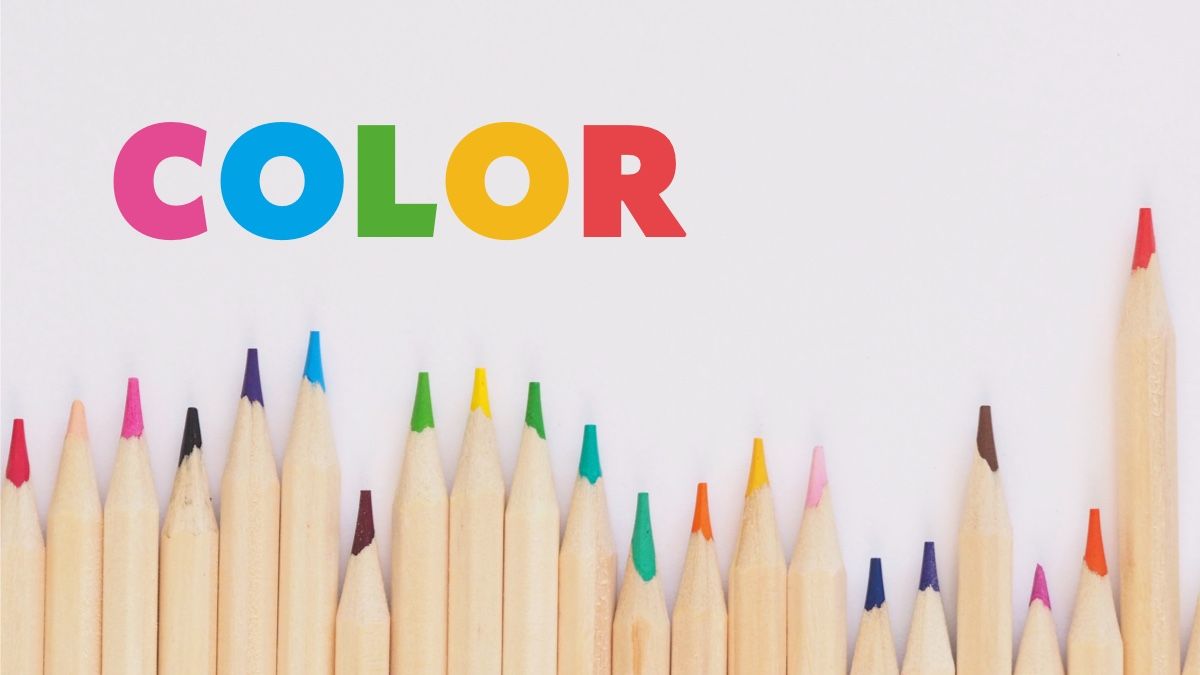In the world of branding and marketing, color psychology plays a pivotal role in shaping consumer perceptions and emotions. This article will delve into various aspects of color psychology, revealing how choosing the right hues can enhance your brand's image and forge a deeper connection with your target audience.
Color Psychology
Color psychology is the study of how colors can influence human behavior, emotions, and perceptions. With the understanding that different colors can evoke various psychological responses, marketers and designers use color psychology to create impactful branding and marketing strategies. Below is an overview of color psychology and how it can be applied effectively.
Primary Colors

RED
Red is a powerful and attention-grabbing color that can evoke strong emotions, ranging from passion and love to aggression and danger. It is often used in marketing to create a sense of urgency, stimulate appetite, or provoke excitement. Brands such as Coca-Cola and Target utilize red in their logos to create a memorable and energetic image.

BLUE
Blue is associated with feelings of trust, stability, and reliability. It is a calming and soothing color often used by financial institutions, tech companies, and healthcare organizations. Brands like IBM, Intel, and American Express leverage blue to convey professionalism and dependability.

YELLOW
Yellow is the color of optimism, happiness, and energy. It can stimulate creativity and generate a sense of warmth. Brands such as McDonald's, Nikon, and IKEA use yellow to create a cheerful and inviting atmosphere.
Secondary Colors

GREEN
Green is the color of nature and growth, often associated with health, tranquility, and sustainability. Brands like Starbucks, Whole Foods, and The Body Shop use green to emphasize their environmental consciousness and commitment to well-being.

ORANGE
Orange is a vibrant and energetic color that can invoke feelings of enthusiasm, excitement, and warmth. Brands like Home Depot, Amazon, and Nickelodeon use orange to create a sense of fun and approachability.

PURPLE
Purple is often associated with royalty, luxury, and sophistication. It can also evoke feelings of creativity and spirituality. Brands like Cadbury, FedEx, and Hallmark use purple to create a sense of exclusivity and elegance.
Tertiary Colors

BROWN
Brown is a natural, earthy color that can convey stability, reliability, and warmth. Brands like UPS, Hershey's, and M&M's use brown to emphasize their long-standing history and dependable products.

PINK
Pink is a delicate, feminine color often associated with love, romance, and softness. Brands like Victoria's Secret, T-Mobile, and Barbie use pink to appeal to a predominantly female audience and create a sense of playfulness.

GREY
Gray is a neutral color that can convey sophistication, professionalism, and elegance. Brands like Apple, Mercedes-Benz, and The New York Times use gray to create a sleek and modern image.
The Role of Color in Branding and Marketing
Color is an essential aspect of branding and marketing, as it has the power to create an instant connection with a brand's identity and messaging. By evoking certain emotions and associations, colors can set the tone for a brand's communication and overall aesthetic. For example, Apple's sleek silver and minimalist white convey a sense of innovation, sophistication, and cutting-edge technology. In contrast, Tiffany & Co.'s iconic robin's-egg blue creates an aura of luxury, elegance, and exclusivity, instantly recognizable as a symbol of their brand. Additionally, Facebook's use of blue signifies trust and stability, which resonates with their mission to connect people worldwide. Through these examples, it is clear that successful color use in branding can create a lasting impact on the audience, shaping their perception of the brand and its values.

Coca-Cola
Coca-Cola's signature red embodies passion, excitement, and energy. This vibrant hue commands attention and reflects the brand's lively, spirited personality.

Starbucks
The sophisticated green employed by Starbucks conveys growth, freshness, and an appreciation for the environment. This verdant shade reflects the brand's commitment to sustainability and quality ingredients, showcasing their refined taste.

IBM
The deep blue associated with IBM represents trust, stability, and intelligence. This classic hue communicates the company's expertise and reliability, instilling confidence in their technology solutions.
The strategic use of color in branding and marketing can significantly impact a brand's image and the emotions it elicits. By carefully selecting the right colors, you can strengthen your brand's identity and foster a deeper connection with your target audience.
Choosing the Right Colors for Your Brand
Selecting the appropriate colors for your branding and marketing materials is a critical decision that can significantly impact your brand's success. Here are some factors to consider when choosing colors that align with your brand values and resonate with your target audience.
Brand Personality
Your brand's colors should reflect the personality and tone you want to convey. Consider the emotions and characteristics associated with each color, and choose those that align with your brand values and desired image. For example, a tech company might opt for a combination of blue and gray to emphasize trust and professionalism, while a children's toy brand may choose vibrant colors like red, yellow, and orange to evoke fun and energy.
Target Audience
Consider the preferences of your target audience when selecting your brand colors. Different colors may have varying cultural associations or resonate differently with specific demographics. For instance, a luxury fashion brand targeting an affluent, sophisticated audience might opt for deep, rich colors like purple, gold, or navy, while a health-focused brand targeting a younger, eco-conscious demographic may choose shades of green or earthy tones.
Industry Norms
While it's essential to stand out from competitors, it's also important to consider industry norms and expectations when selecting colors. Certain industries tend to favor specific color schemes, and deviating too far from these norms may confuse or alienate your target audience. For example, financial institutions often use shades of blue to convey trust and stability, while eco-friendly companies frequently use green to emphasize sustainability.
Versatility and Consistency
Choose colors that can be easily adapted across various platforms and materials, ensuring consistency in your brand's visual identity. Your selected colors should work well in both print and digital formats, and be effective in small or large scales, as well as in black and white or grayscale versions.
Color Combinations and Balance
When selecting multiple colors for your branding, consider how they will work together to create a harmonious and visually appealing palette. Use color theory principles, such as complementary, analogous, or triadic color schemes, to achieve balance and coherence. Also, keep in mind the importance of contrast, ensuring that your chosen colors are easily readable and distinguishable when used for text and background elements.
By carefully considering these factors, businesses can choose colors that accurately represent their brand values, resonate with their target audience, and contribute to a cohesive and memorable visual identity.
Color Consistency Across Channels
Maintaining color consistency in branding and marketing efforts is crucial for businesses, as it helps establish brand recognition, build trust, and convey a sense of professionalism. Inconsistent color usage can lead to confusion among customers and weaken the impact of your brand's visual identity. Here are some tips for achieving color consistency across various channels.
Develop a Brand Style Guide
Create a comprehensive brand style guide that includes your brand's primary and secondary colors, along with guidelines on how to use them. Specify the exact color codes (e.g., RGB, CMYK, HEX) to ensure that the same colors are used consistently across different platforms, from print materials to digital content.
Use a Limited Color Palette
Limit the number of colors in your branding to create a more cohesive and recognizable visual identity. A simple, well-defined color palette will make it easier to maintain consistency across various channels and materials.
Test Color Reproduction
Different devices, screens, and printers may reproduce colors differently, so it's essential to test your chosen colors on various platforms to ensure they appear consistent. Make adjustments as necessary to account for these discrepancies.
Consistent Application
Ensure that your team members, designers, and any external collaborators are well-versed in your brand's color guidelines and understand the importance of maintaining consistency. Provide them with access to your brand style guide and encourage them to follow the guidelines diligently.
Periodic Review
Regularly review your branding and marketing materials to ensure that color consistency is maintained. Address any inconsistencies as they arise, and update your brand style guide if needed to provide clearer guidance or account for changes in your brand's visual identity.
By focusing on color consistency across all channels, businesses can create a strong and cohesive visual identity that fosters brand recognition, reinforces their message, and contributes to long-term success.
In conclusion, the impact of color psychology in branding and marketing cannot be underestimated. Color plays a vital role in shaping a brand's identity, communicating its values, and connecting with the target audience. When selecting colors for your brand, it's essential to consider the psychological effects they have, as well as how they align with your brand's values and target audience. Furthermore, maintaining color consistency across all channels is crucial for establishing brand recognition and trust. By thoughtfully considering the role of color in your branding and marketing efforts, and ensuring consistency across all touchpoints, you can create a strong and cohesive visual identity that will help your business stand out and thrive in a competitive marketplace.

